#golanglearning wyniki wyszukiwania
🔗 Step 26: Communicating with channels in #Golang! Channels allow goroutines to communicate Efficient and safe data sharing! 🚀 #GolangLearning #100DaysOfCode #DevJourney #Channels #Concurrency

🔢 Step 22: Working with enums in #Golang! Go doesn't have built-in enums, but you can create them using `iota`: type Status int const ( Pending Status = iota Active Inactive ) fmt.Println(Pending, Active, Inactive) Simple and effective for constant values! #GolangLearning
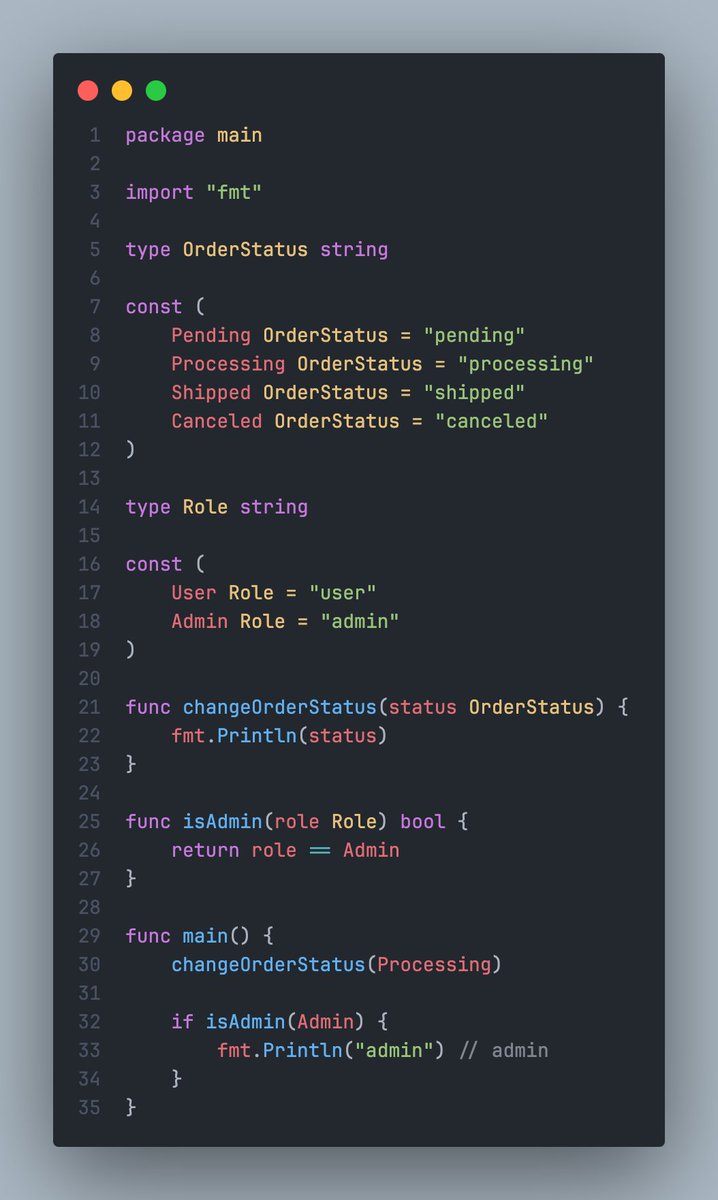
🔀 Step 16: Exploring variadic functions in #Golang! Variadic functions take multiple arguments Perfect for flexible input! 🚀 #GoLang #GolangLearning #100DaysOfCode #DevJourney #VariadicFunctions

📁 Step 28: Working with files in #Golang! Read and write files easily Handle file I/O efficiently! 🚀 #GoLang #GolangLearning #100DaysOfCode #DevJourney #FileHandling
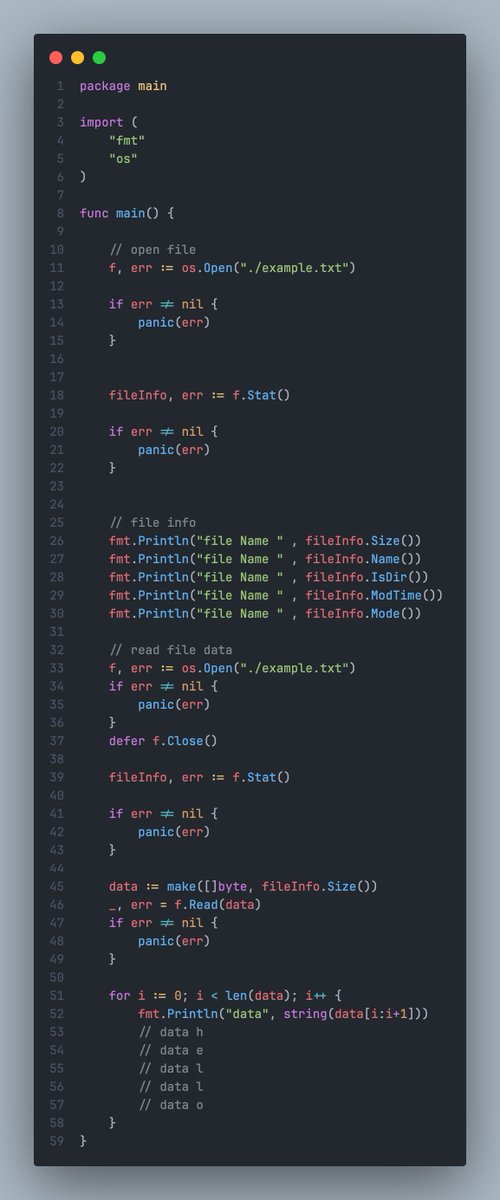

🔒 Step 17: Learning closures in #Golang! Closures capture variables from their surrounding scope: Functions within functions—powerful! 🚀 #GoLang #GolangLearning #100DaysOfCode #DevJourney #Closures

🛠️ Step 21: Understanding interfaces in #Golang! Interfaces define behaviour: Flexible and powerful for polymorphism! 🚀 #GoLang #GolangLearning #100DaysOfCode #DevJourney #Interfaces

🔗 Step 20: Learning struct embedding in #Golang! Embed structs to reuse fields: A neat way to compose structs! 🚀 #GoLang #GolangLearning #100DaysOfCode #DevJourney #StructEmbedding
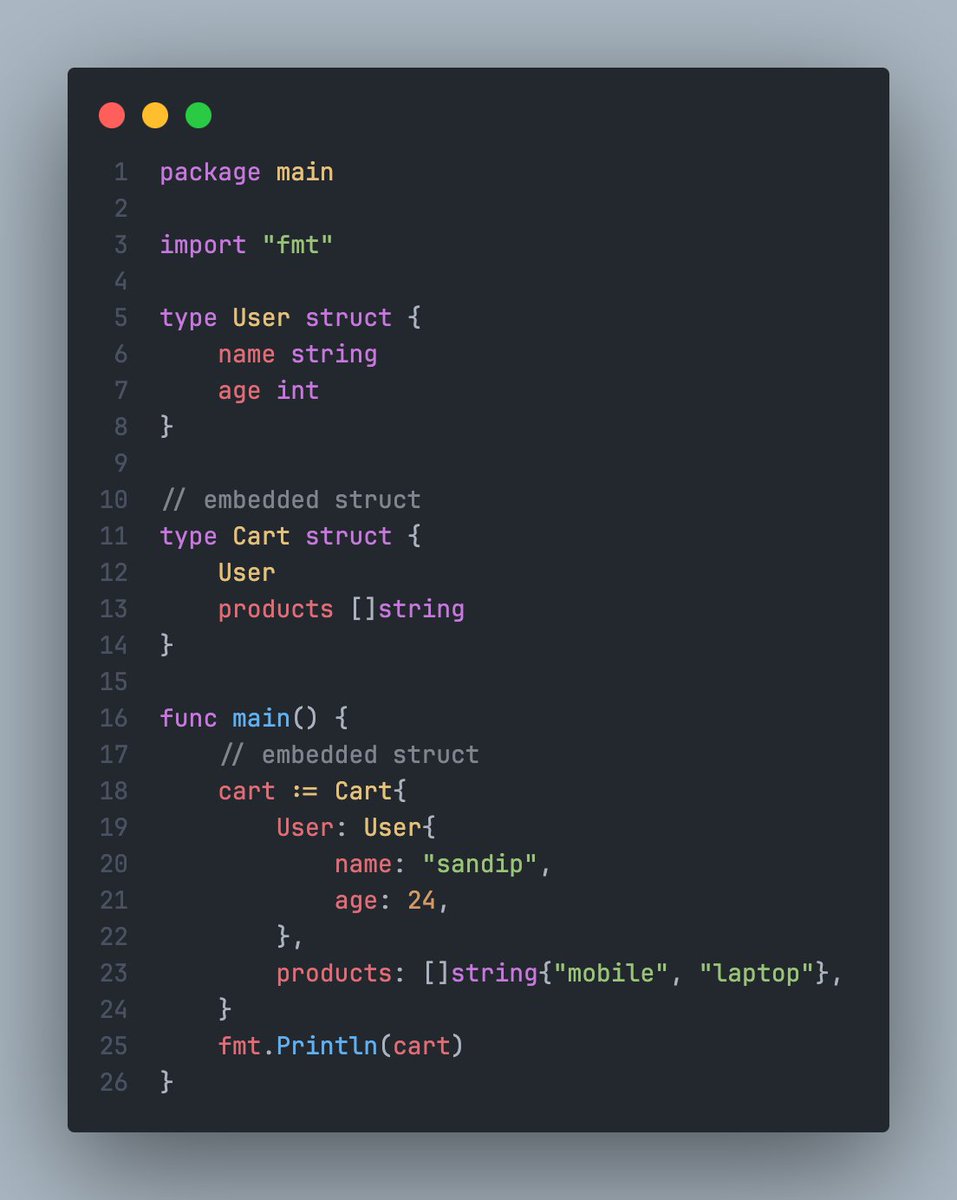
🔒 Step 27: Synchronizing with `Mutex` in #Golang! Use `Mutex` to prevent race conditions Ensure safe access to shared resources! 🚀 #GoLang #GolangLearning #100DaysOfCode #DevJourney #Mutex #Concurrency

📦 Step 29: Organizing code with packages in #Golang! Create reusable code by using packages Keep your code clean and modular! 🚀 #GoLang #GolangLearning #100DaysOfCode #DevJourney #Packages
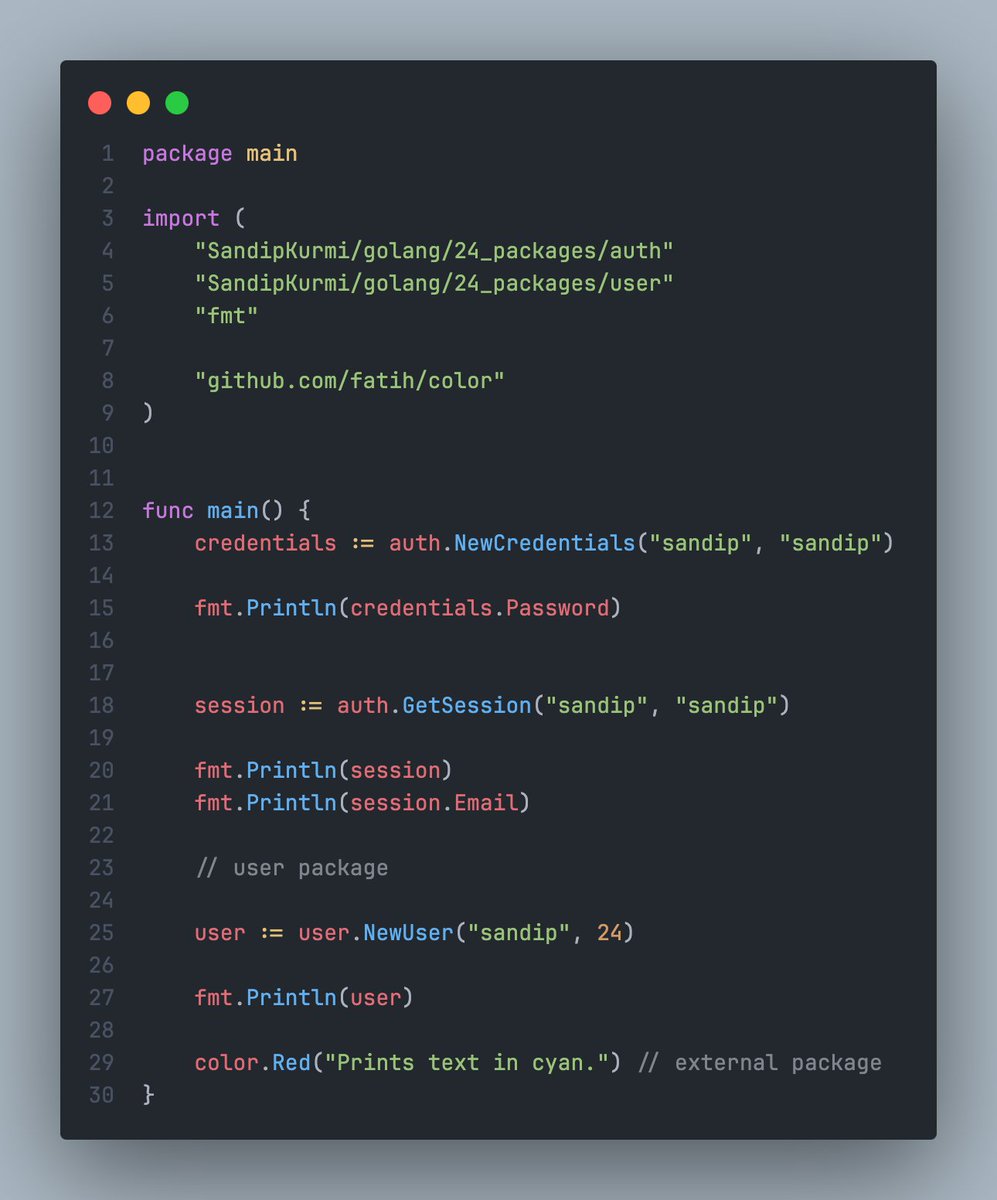

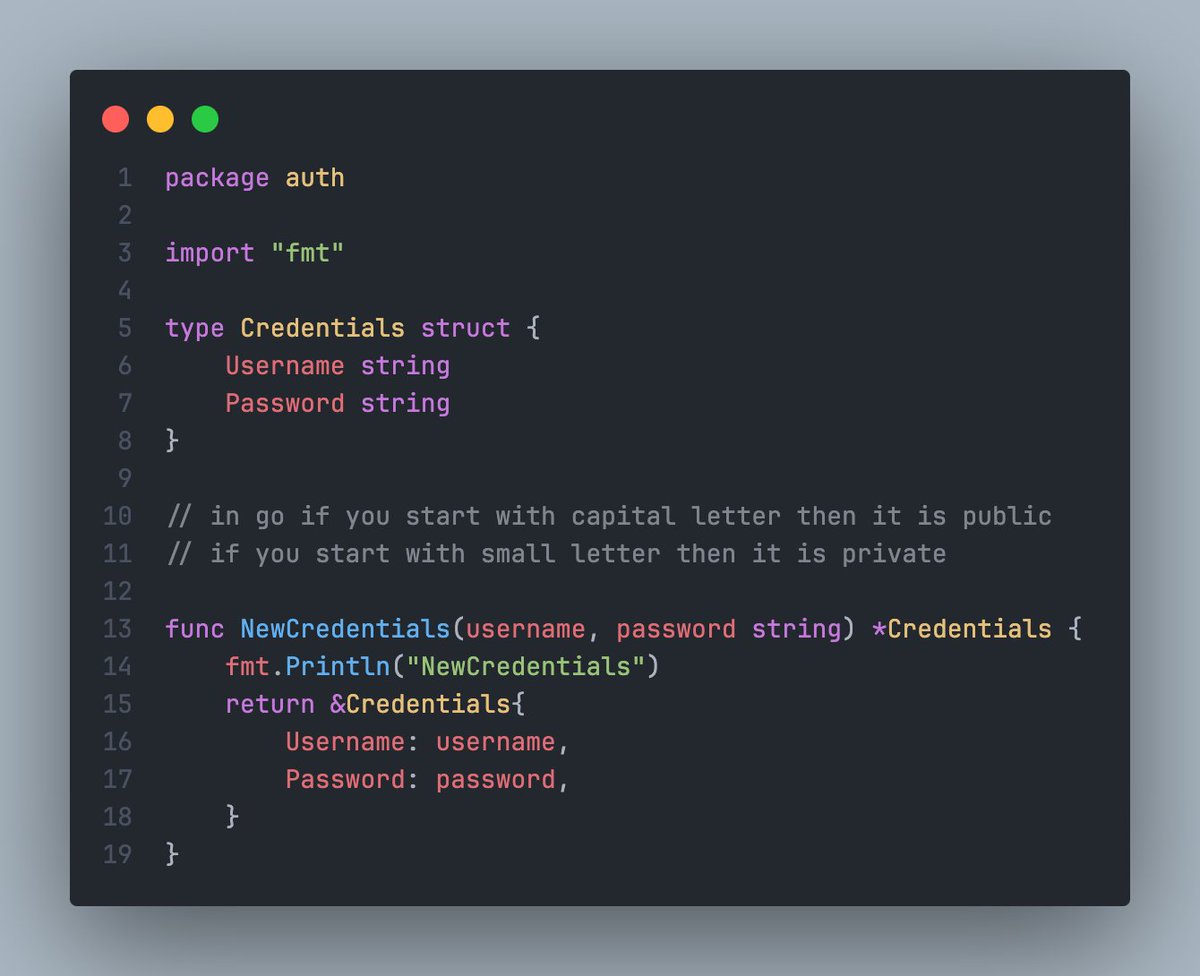
🔧 Step 23: Exploring generics in #Golang! Generics allow for type-safe, reusable code Generics make functions and types more flexible! 🚀 #GoLang #GolangLearning #100DaysOfCode #DevJourney #Generics

📍 Step 18: Understanding pointers in #Golang! Pointers hold the memory address of a value: var x int = 42 var ptr *int = &x fmt.Println(*ptr) // Outputs: 42 Great for efficient memory management and passing by reference! 🚀 #GolangLearning #100DaysOfCode #DevJourney #Pointers

📊 Step 11: Exploring arrays in #Golang! Arrays hold a fixed size of elements: var arr [5]int arr[0] = 10 fmt.Println(arr) Efficient and great for handling static data! 🚀 #GoLang #GolangLearning #100DaysOfCode #DevJourney #Arrays
![sandipkurmi0's tweet image. 📊 Step 11: Exploring arrays in #Golang!
Arrays hold a fixed size of elements:
var arr [5]int
arr[0] = 10
fmt.Println(arr)
Efficient and great for handling static data! 🚀 #GoLang #GolangLearning #100DaysOfCode #DevJourney #Arrays](https://pbs.twimg.com/media/GYj32jiXMAAOAt4.jpg)
🗺️ Step 13: Understanding maps in #Golang! Maps store key-value pairs: m := map[string]int{"apples": 5, "bananas": 3} fmt.Println(m["apples"]) Super useful for fast lookups! 🚀 #GoLang #GolangLearning #100DaysOfCode #DevJourney #Maps
![sandipkurmi0's tweet image. 🗺️ Step 13: Understanding maps in #Golang!
Maps store key-value pairs:
m := map[string]int{"apples": 5, "bananas": 3}
fmt.Println(m["apples"])
Super useful for fast lookups! 🚀 #GoLang #GolangLearning #100DaysOfCode #DevJourney #Maps](https://pbs.twimg.com/media/GYkG3Z7WkAAzMpS.jpg)
🔄 Step 14: Using `range` in #Golang! The `range` keyword iterates over arrays, slices, and maps: nums := []int{1, 2, 3} for i, num := range nums { fmt.Println(i, num) } Great for concise loops! 🚀 #GoLang #GolangLearning #100DaysOfCode #DevJourney #Range
![sandipkurmi0's tweet image. 🔄 Step 14: Using `range` in #Golang!
The `range` keyword iterates over arrays, slices, and maps:
nums := []int{1, 2, 3}
for i, num := range nums {
fmt.Println(i, num)
}
Great for concise loops! 🚀 #GoLang #GolangLearning #100DaysOfCode #DevJourney #Range](https://pbs.twimg.com/media/GYkNO3KXsAEIHMa.jpg)
🔧 Step 15: Writing functions in #Golang! Functions keep your code modular and reusable: func add(a int, b int) int { return a + b } fmt.Println(add(5, 3)) Organized code, made simple! 🚀 #GoLang #GolangLearning #100DaysOfCode #DevJourney #Functions

⏳ Step 25: Synchronizing Goroutines with `WaitGroup` in #Golang! `WaitGroup` ensures all goroutines finish before proceeding Perfect for managing concurrent tasks! 🚀 #GoLang #GolangLearning #100DaysOfCode #DevJourney #WaitGroup #Goroutines

🔪 Step 12: Diving into slices in #Golang! Slices are dynamic, and more flexible than arrays: s := []int{1, 2, 3} s = append(s, 4) fmt.Println(s) Perfect for handling variable-length data! 🚀 #GoLang #GolangLearning #100DaysOfCode #DevJourney #Slices
![sandipkurmi0's tweet image. 🔪 Step 12: Diving into slices in #Golang!
Slices are dynamic, and more flexible than arrays:
s := []int{1, 2, 3}
s = append(s, 4)
fmt.Println(s)
Perfect for handling variable-length data! 🚀 #GoLang #GolangLearning #100DaysOfCode #DevJourney #Slices](https://pbs.twimg.com/media/GYkB6MxXcAAmLAL.jpg)
🚀 My #GoLangLearning summary of last week 🔗 Check out my journey diving into #Golang: github.com/dhairya-rathod… #Go #GoLang #CodingJourney #TechLearning

⚡️ Step 24: Harnessing the power of Goroutines in #Golang! Goroutines enable lightweight concurrency: go func() { fmt.Println("Running in a goroutine!") }() Achieve parallelism with ease—fast and efficient! 🚀 #GolangLearning #100DaysOfCode #DevJourney #Goroutines #Concurrency

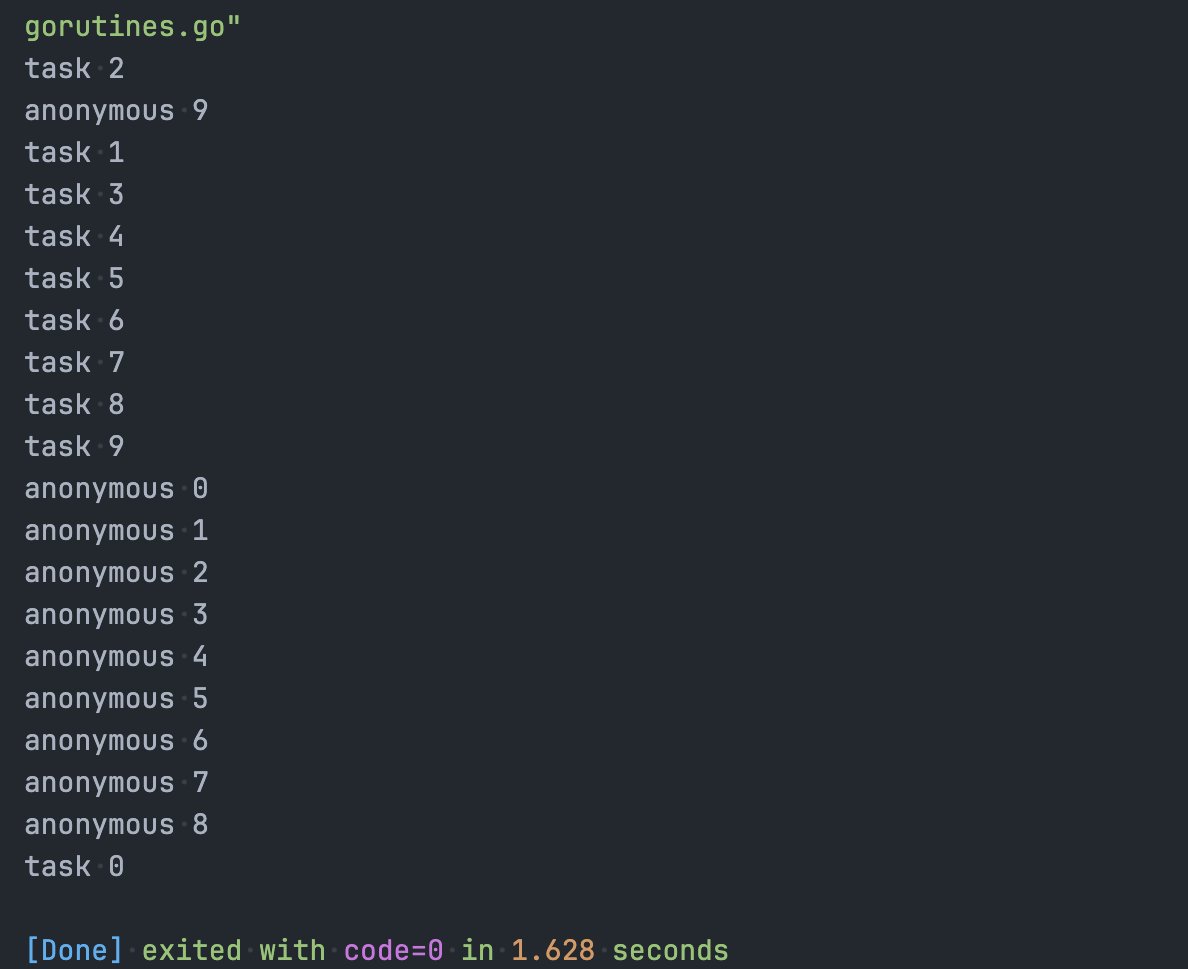
till i get cracked we go again. 🚀 #100DaysOfCode #Golang #GoLangLearning #BuildInPublic
recently started learning golang this is my first project it is a input validation library github.com/mcctrix/ctrix-… #Golang #GoLangLearning #InputValidation #GoDeveloper #OpenSourceProject #CodingJourney #SoftwareDevelopment #Programming #LearnToCode
github.com
GitHub - ctrixcode/ctrix-validator
Contribute to ctrixcode/ctrix-validator development by creating an account on GitHub.
Hello fam! 👋 I’d appreciate some great resources for learning Golang. If you have suggestions, tips, or valuable insights to help me level up, I’d truly appreciate it. Thank you! 🙏 #Golang #BackendDevelopment #GoLangLearning #DevCommunity
Day 13: Learning JSON in Go! 🚀 🔹 json.Marshal() → Convert struct to JSON 🔹 json.Unmarshal() → Parse JSON into structs/maps 🔹 omitempty → Skips empty fields 🔹 Pretty-print JSON with json.MarshalIndent() Go makes handling JSON easy! #100DaysOfCode #GoLang #GolangLearning
Day 12: Learning Structs in Go! 🚀 Structs help group related data like blueprints. Embedding makes access simpler! 🔹 Define: type Employee struct { ID int; Name string } 🔹 Embed: type Wheel struct { Circle; Spokes int } #GoLang #100DaysOfCode #GolangLearning #Go
Day 11: Learning Maps in Go! 🚀 Today, I explored maps in Go: ✅ Used map[string]bool to track unique input lines ✅ Added, updated & deleted keys in map[string]int ✅ Checked key existence using ok pattern #GoLang #100DaysOfCode #golanglearning #Coding
Go (Golang) 🏎️ Started my journey with Go! 🚀 The simplicity & concurrency model are 🔥. Loving how efficient & readable it is. Any must-read Go resources? Drop them below! 👇 #Golang #GoLangLearning Github:- github.com/GillHapp/learn…
github.com
GitHub - GillHapp/learning_golang: lession series of golang
lession series of golang . Contribute to GillHapp/learning_golang development by creating an account on GitHub.
Just completed the Go Lang tutorial playlist by @Hiteshdotcom! Learned the fundamentals of Go, Lexer, Defer, Mux, Mutex, Wait Groups, Channels and more #Golang #GoLangLearning #BackendDevelopment #Programming #DevJourney #Coding #SoftwareEngineering #WebDevelopment #Tech

I’ve started learning Golang! Loving the simplicity and power it offers for building efficient, scalable solutions. If anyone else is exploring Go or has experience with it, I’d love to connect and exchange ideas! Let’s grow together. #Golang #GoLangLearning
Create a proper DB table for future demos Learn to write test cases for HTTP servers & DB connections 💡 Any tips for testing servers or DBs in Go? Your insights would be super helpful! 🙏 #Golang #GoLangLearning #100DaysOfCode #WebDev
🚀 #Week1ofGo 🚀 Jumped into my Go journey, and wow —“A Tour of Go” makes it such a fun start! Already feeling the magic of Golang, and can’t wait to build more. 💻🌟 🚀 #Golang #GoLangLearning #CodeNewbie #100DaysOfCode #GoDev #BackendDevelopment
📦 Step 29: Organizing code with packages in #Golang! Create reusable code by using packages Keep your code clean and modular! 🚀 #GoLang #GolangLearning #100DaysOfCode #DevJourney #Packages



📁 Step 28: Working with files in #Golang! Read and write files easily Handle file I/O efficiently! 🚀 #GoLang #GolangLearning #100DaysOfCode #DevJourney #FileHandling


🔒 Step 27: Synchronizing with `Mutex` in #Golang! Use `Mutex` to prevent race conditions Ensure safe access to shared resources! 🚀 #GoLang #GolangLearning #100DaysOfCode #DevJourney #Mutex #Concurrency

🔗 Step 26: Communicating with channels in #Golang! Channels allow goroutines to communicate Efficient and safe data sharing! 🚀 #GolangLearning #100DaysOfCode #DevJourney #Channels #Concurrency

⏳ Step 25: Synchronizing Goroutines with `WaitGroup` in #Golang! `WaitGroup` ensures all goroutines finish before proceeding Perfect for managing concurrent tasks! 🚀 #GoLang #GolangLearning #100DaysOfCode #DevJourney #WaitGroup #Goroutines

⚡️ Step 24: Harnessing the power of Goroutines in #Golang! Goroutines enable lightweight concurrency: go func() { fmt.Println("Running in a goroutine!") }() Achieve parallelism with ease—fast and efficient! 🚀 #GolangLearning #100DaysOfCode #DevJourney #Goroutines #Concurrency


🔧 Step 23: Exploring generics in #Golang! Generics allow for type-safe, reusable code Generics make functions and types more flexible! 🚀 #GoLang #GolangLearning #100DaysOfCode #DevJourney #Generics

🔢 Step 22: Working with enums in #Golang! Go doesn't have built-in enums, but you can create them using `iota`: type Status int const ( Pending Status = iota Active Inactive ) fmt.Println(Pending, Active, Inactive) Simple and effective for constant values! #GolangLearning

🚀 My #GoLangLearning summary of last week 🔗 Check out my journey diving into #Golang: github.com/dhairya-rathod… #Go #GoLang #CodingJourney #TechLearning

🔗 Step 26: Communicating with channels in #Golang! Channels allow goroutines to communicate Efficient and safe data sharing! 🚀 #GolangLearning #100DaysOfCode #DevJourney #Channels #Concurrency

🔀 Step 16: Exploring variadic functions in #Golang! Variadic functions take multiple arguments Perfect for flexible input! 🚀 #GoLang #GolangLearning #100DaysOfCode #DevJourney #VariadicFunctions

📁 Step 28: Working with files in #Golang! Read and write files easily Handle file I/O efficiently! 🚀 #GoLang #GolangLearning #100DaysOfCode #DevJourney #FileHandling


🔒 Step 17: Learning closures in #Golang! Closures capture variables from their surrounding scope: Functions within functions—powerful! 🚀 #GoLang #GolangLearning #100DaysOfCode #DevJourney #Closures

🔄 Step 10: Using `switch` statements in #Golang! Efficient control flow with `switch`: Clean and concise! 🚀 #GoLang #GolangLearning #100DaysOfCode #DevJourney #SwitchStatement

🛠️ Step 21: Understanding interfaces in #Golang! Interfaces define behaviour: Flexible and powerful for polymorphism! 🚀 #GoLang #GolangLearning #100DaysOfCode #DevJourney #Interfaces

🔗 Step 20: Learning struct embedding in #Golang! Embed structs to reuse fields: A neat way to compose structs! 🚀 #GoLang #GolangLearning #100DaysOfCode #DevJourney #StructEmbedding

🔒 Step 27: Synchronizing with `Mutex` in #Golang! Use `Mutex` to prevent race conditions Ensure safe access to shared resources! 🚀 #GoLang #GolangLearning #100DaysOfCode #DevJourney #Mutex #Concurrency

📦 Step 29: Organizing code with packages in #Golang! Create reusable code by using packages Keep your code clean and modular! 🚀 #GoLang #GolangLearning #100DaysOfCode #DevJourney #Packages



🔧 Step 23: Exploring generics in #Golang! Generics allow for type-safe, reusable code Generics make functions and types more flexible! 🚀 #GoLang #GolangLearning #100DaysOfCode #DevJourney #Generics

🔀 Step 9: Learning `if-else` in #Golang! Control flow with `if-else`: if x > 10 { fmt.Println("x is greater than 10") } else { fmt.Println("x is 10 or less") } Straightforward and clean! 🚀 #GoLang #GolangLearning #100DaysOfCode #DevJourney #IfElse
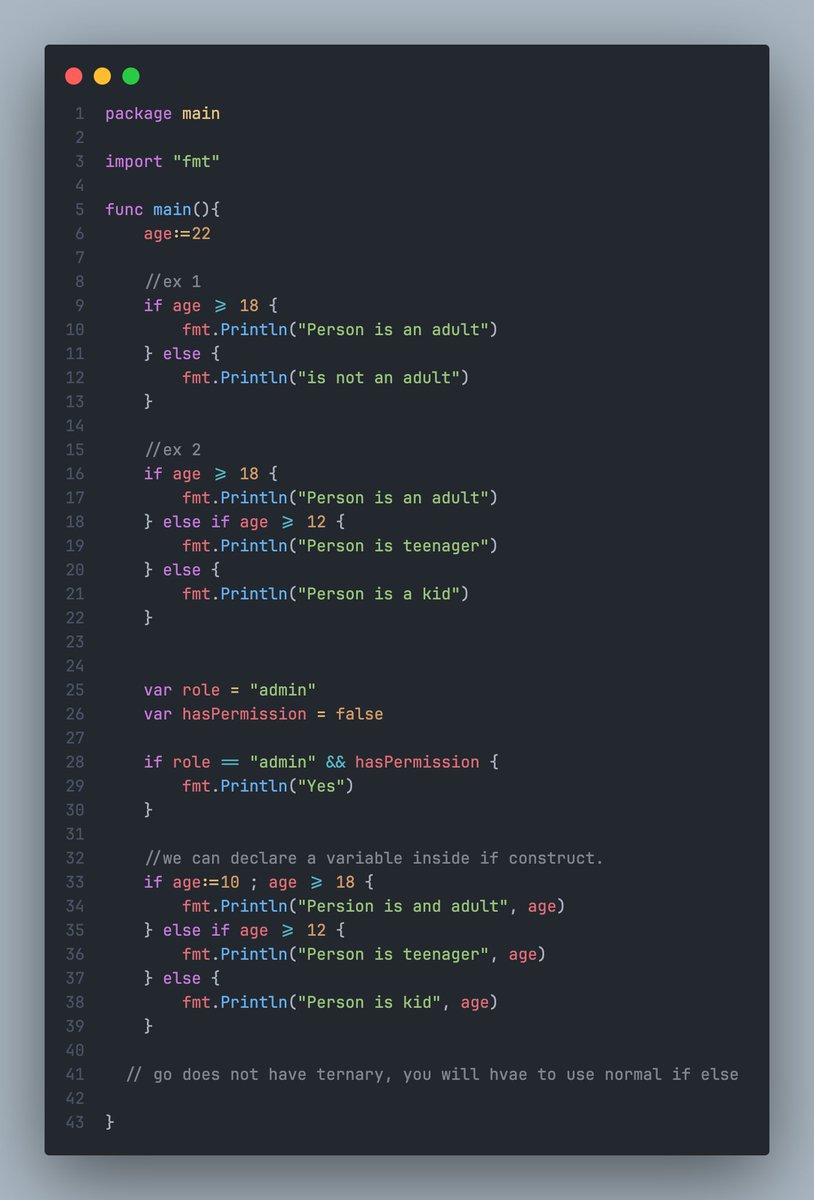
📍 Step 18: Understanding pointers in #Golang! Pointers hold the memory address of a value: var x int = 42 var ptr *int = &x fmt.Println(*ptr) // Outputs: 42 Great for efficient memory management and passing by reference! 🚀 #GolangLearning #100DaysOfCode #DevJourney #Pointers

🔢 Step 22: Working with enums in #Golang! Go doesn't have built-in enums, but you can create them using `iota`: type Status int const ( Pending Status = iota Active Inactive ) fmt.Println(Pending, Active, Inactive) Simple and effective for constant values! #GolangLearning

📊 Step 11: Exploring arrays in #Golang! Arrays hold a fixed size of elements: var arr [5]int arr[0] = 10 fmt.Println(arr) Efficient and great for handling static data! 🚀 #GoLang #GolangLearning #100DaysOfCode #DevJourney #Arrays
![sandipkurmi0's tweet image. 📊 Step 11: Exploring arrays in #Golang!
Arrays hold a fixed size of elements:
var arr [5]int
arr[0] = 10
fmt.Println(arr)
Efficient and great for handling static data! 🚀 #GoLang #GolangLearning #100DaysOfCode #DevJourney #Arrays](https://pbs.twimg.com/media/GYj32jiXMAAOAt4.jpg)
🗺️ Step 13: Understanding maps in #Golang! Maps store key-value pairs: m := map[string]int{"apples": 5, "bananas": 3} fmt.Println(m["apples"]) Super useful for fast lookups! 🚀 #GoLang #GolangLearning #100DaysOfCode #DevJourney #Maps
![sandipkurmi0's tweet image. 🗺️ Step 13: Understanding maps in #Golang!
Maps store key-value pairs:
m := map[string]int{"apples": 5, "bananas": 3}
fmt.Println(m["apples"])
Super useful for fast lookups! 🚀 #GoLang #GolangLearning #100DaysOfCode #DevJourney #Maps](https://pbs.twimg.com/media/GYkG3Z7WkAAzMpS.jpg)
🔄 Step 14: Using `range` in #Golang! The `range` keyword iterates over arrays, slices, and maps: nums := []int{1, 2, 3} for i, num := range nums { fmt.Println(i, num) } Great for concise loops! 🚀 #GoLang #GolangLearning #100DaysOfCode #DevJourney #Range
![sandipkurmi0's tweet image. 🔄 Step 14: Using `range` in #Golang!
The `range` keyword iterates over arrays, slices, and maps:
nums := []int{1, 2, 3}
for i, num := range nums {
fmt.Println(i, num)
}
Great for concise loops! 🚀 #GoLang #GolangLearning #100DaysOfCode #DevJourney #Range](https://pbs.twimg.com/media/GYkNO3KXsAEIHMa.jpg)
🔧 Step 15: Writing functions in #Golang! Functions keep your code modular and reusable: func add(a int, b int) int { return a + b } fmt.Println(add(5, 3)) Organized code, made simple! 🚀 #GoLang #GolangLearning #100DaysOfCode #DevJourney #Functions

⏳ Step 25: Synchronizing Goroutines with `WaitGroup` in #Golang! `WaitGroup` ensures all goroutines finish before proceeding Perfect for managing concurrent tasks! 🚀 #GoLang #GolangLearning #100DaysOfCode #DevJourney #WaitGroup #Goroutines

🔪 Step 12: Diving into slices in #Golang! Slices are dynamic, and more flexible than arrays: s := []int{1, 2, 3} s = append(s, 4) fmt.Println(s) Perfect for handling variable-length data! 🚀 #GoLang #GolangLearning #100DaysOfCode #DevJourney #Slices
![sandipkurmi0's tweet image. 🔪 Step 12: Diving into slices in #Golang!
Slices are dynamic, and more flexible than arrays:
s := []int{1, 2, 3}
s = append(s, 4)
fmt.Println(s)
Perfect for handling variable-length data! 🚀 #GoLang #GolangLearning #100DaysOfCode #DevJourney #Slices](https://pbs.twimg.com/media/GYkB6MxXcAAmLAL.jpg)
Something went wrong.
Something went wrong.
United States Trends
- 1. LINGORM DIOR AT MACAU 173K posts
- 2. Good Friday 42.4K posts
- 3. #GenshinSpecialProgram 11.2K posts
- 4. Josh Allen 41.2K posts
- 5. Four Seasons 10.3K posts
- 6. Texans 61.1K posts
- 7. Bills 153K posts
- 8. #FridayVibes 3,076 posts
- 9. Niger 52.3K posts
- 10. OpenMind 52K posts
- 11. Joe Brady 5,388 posts
- 12. Beane 2,988 posts
- 13. Infinit 85.2K posts
- 14. #Ashes2025 26.7K posts
- 15. Miden 13.5K posts
- 16. #MissUniverse 484K posts
- 17. McDermott 4,883 posts
- 18. Anderson 29.1K posts
- 19. Commander in Chief 83K posts
- 20. FINAL DRAFT FINAL LOVE 1.36M posts











